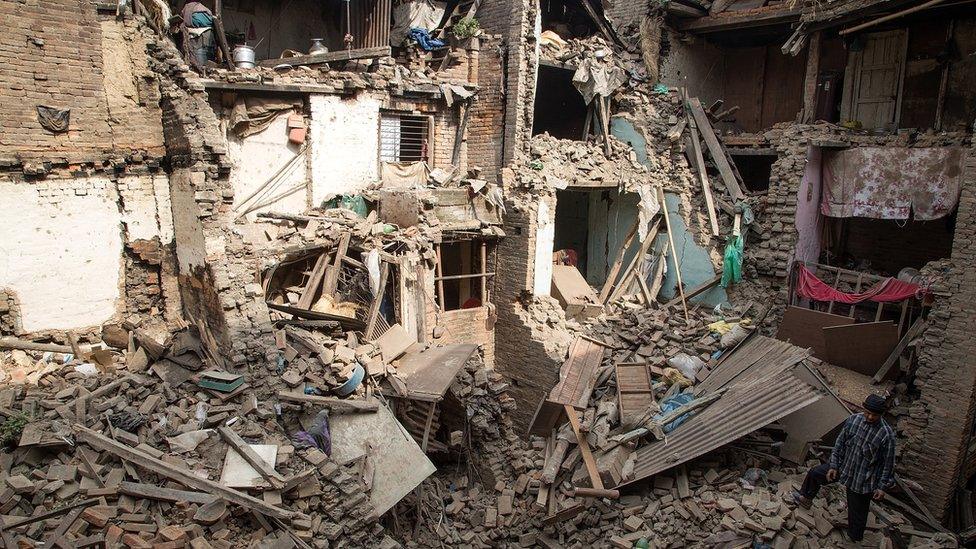Japan quake: The long aftershock of the 2011 disaster
- Published

The magnitude-7.4 earthquake has caused scare among residents who are still recuperating from the magnitude-9 quake five years ago
Japan's scientists say the magnitude-7.4 earthquake that hit the Fukushima and Miyagi prefectures on Tuesday was a strong aftershock of the massive Fukushima quake in 2011.
That quake killed more than 18,000 people, displaced tens of thousands and generated a tsunami which caused a nuclear meltdown at the Fukushima power plant. This time, Japan escaped with only a few reports of minor injuries, and tsunami waves of over 1m.
So how common is it for aftershocks to be felt so many years later?
What counts as an aftershock?
Martha Savage, a geophysics professor at Victoria University in Wellington who is currently in Japan, told the BBC that an aftershock is simply any smaller quake that follows a large earthquake in the same region.

The 2011 earthquake was so powerful that it led to a meltdown at the Fukushima nuclear power plant, but there has been no sign of damage after the Tuesday quake.
It is "not particularly unusual to have aftershocks for years after large events", said Prof Savage.
While Tuesday's quake was "quite large for an aftershock", the quake it followed measured a massive 9.0 - one of the largest ever recorded - so it's "at least two magnitudes smaller".
Why did it happen?
In 2011, the fault line behind the Japan quake slipped a massive 50m in one go, as the Pacific Ocean Plate slid under the Continental Plate, on which Japan sits. The seabed rose 30m in some places, triggering the tsunami.
Footage shows the moment the tsunami reached the port of Miyako
Since then, pressure has continued to build up across the plate, which was released on Tuesday in what's known as an inland earthquake, Aiming Lin, chair professor of the department of geophysics of Kyoto University, told the BBC.
Even though five years have passed, there is still sufficient seismic activity in the area to trigger a magnitude-7 earthquake once a year, according to the Japan Times.
But Tuesday was the first time since December 2012 that the JMA had issued a tsunami alert due to an aftershock from the 2011 quake, said the paper.
Being both late and large makes Tuesday's aftershock slightly unusual, Prof Savage said.
Where else has this happened?
New Zealand, which had a large earthquake last week, is one. It has since had thousands of aftershocks, some with a magnitude of more than 6.
And Napa County in California has had more than 4,600 aftershocks, external since a large quake in August 2014.
The Messina earthquake in 1908, external was a magnitude-7.5 quake that struck southern Italy and brought 13m-high tsunami waves.
But even a century later, Prof Savage said there were more seismic activities in the Messina Region than other surrounding regions.
- Published22 November 2016

- Published24 March 2016

- Published18 November 2016